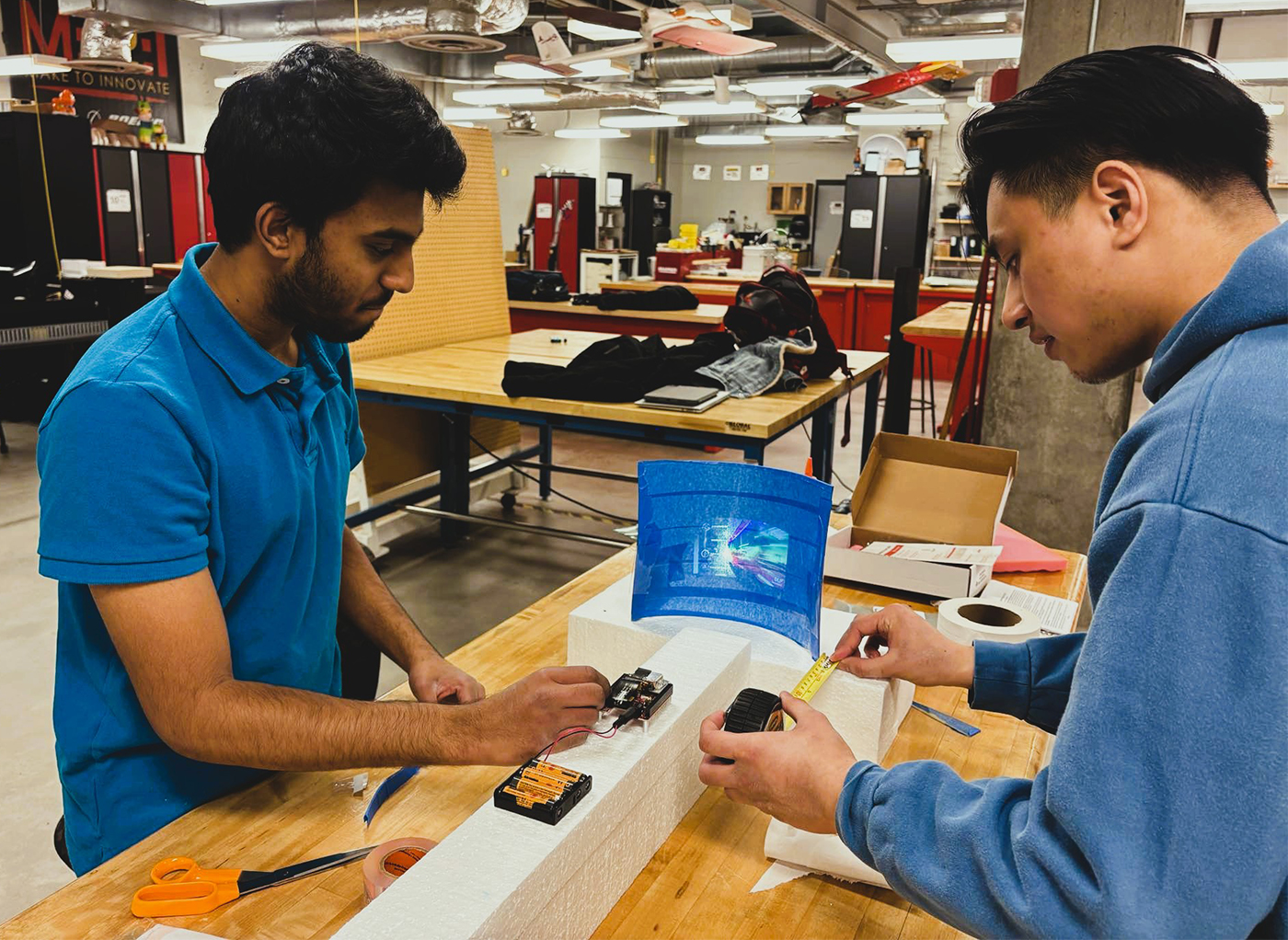A casual conversation among friends sparked an idea that could innovate astronaut helmet functions on space missions.
A group of nine students recognized a need for innovation in astronaut helmets and decided to create an interactive advancement that helps astronauts optimize operational efficiency on space missions and detect hazards — completely hands-free.
The project is called “HAZ-I,” (pronounced “haze-eye”), which stands for “Helmet-integrated Augmented Zone – Interface.” It features an Augmented Reality (AR) Heads-Up Display (HUD). The aim is to create a computerized system to project information onto the surface of an astronaut helmet.
The first step in ensuring their AR HUD was designed for success was for team members to meet with professionals like Clayton Anderson, a retired NASA astronaut, Iowa State alumnus, and faculty member in Iowa State’s Department of Aerospace Engineering (AerE). After a semester of research and planning, the HAZ-I team joined the Make To Innovate (M:2:I) program in AerE to further develop the idea.
Redefining astronaut training and functions
Team members began work on the AR helmet, and say they hope it will redefine astronaut training and functionality. The team has two potential models they are exploring for their AR HUD: a microprojector model and a waveguide model. The microprojector model features a small projector that will display information on a reflective surface in the helmet. The waveguide model utilizes waveguides to direct light in the helmet, providing a lightweight and compact option. The team is developing these models and comparing their effectiveness.
To efficiently distribute the workload among the nine members, HAZ-I divided their group into two teams — each focusing on specific areas. The “Hardware Team” is tasked with designing the helmet, covering everything from structural details to internal sensors. The “Optics Team” is responsible for developing the projection system and fixture within the helmet.
Working prototype helmet on the horizon
By the end of spring semester 2025, HAZ-I members are aiming to construct a working helmet prototype that will integrate sensor data and visual projection.
HAZ-I team members say they hope their research and prototype will provide affordable, interactive, and ground-breaking technology for not only aerospace advancements — but other industries as well. From firefighting helmets and industrial training to medical and surgical AR devices, team members say their HUD system could revolutionize the future of learning and performing work tasks of all kinds.
